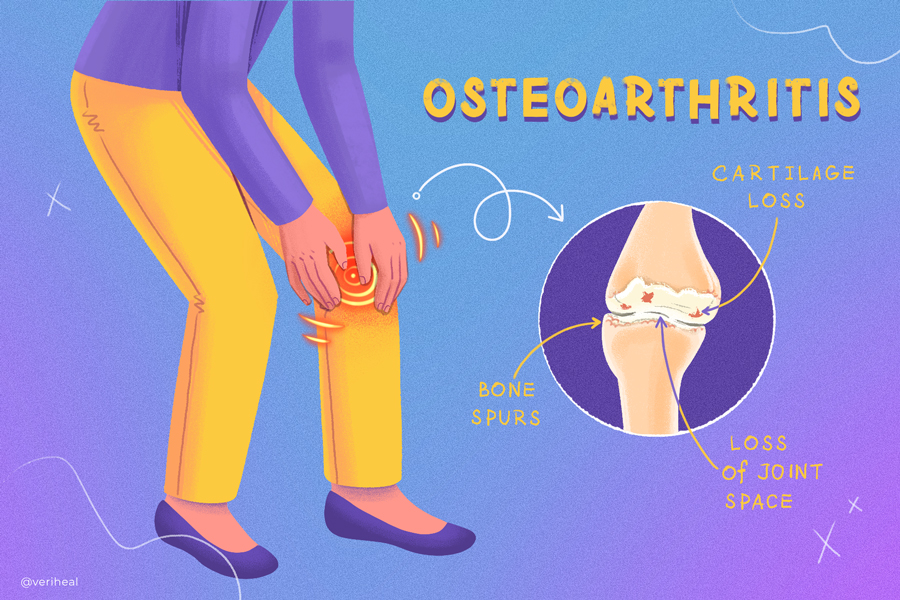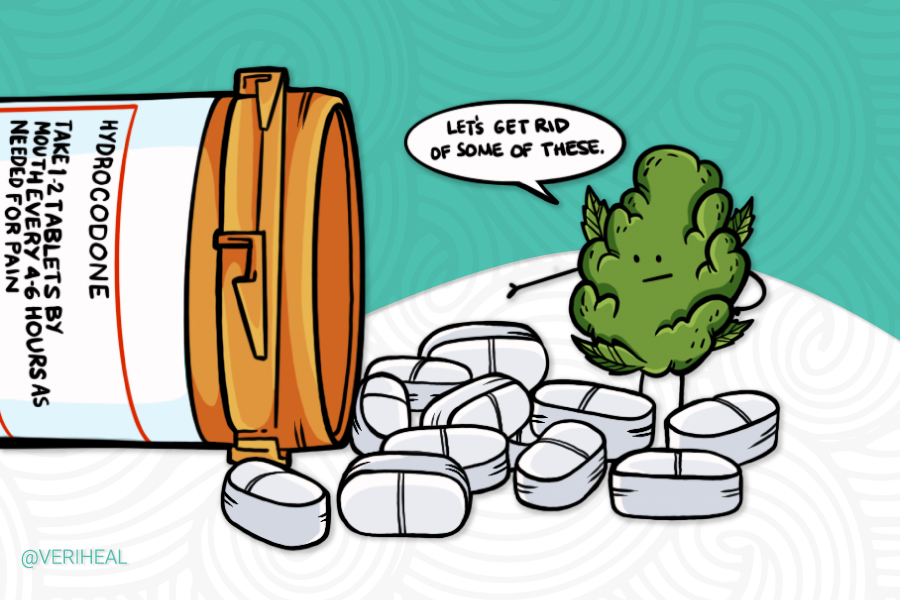Medical Marijuana for Osteoarthritis Treatment

Medical Cannabis and Osteoarthritis: What You Need to Know
Osteoarthritis, a degenerative joint disease, affects millions of people worldwide, causing chronic pain and limited mobility. In recent years, medical cannabis has emerged as a promising alternative for managing the symptoms of osteoarthritis, offering several potential benefits. One significant advantage is its ability to alleviate pain effectively. Cannabinoids, such as THC and CBD, interact with the body’s endocannabinoid system, which plays a crucial role in regulating pain perception. By binding to cannabinoid receptors in the brain and peripheral nervous system, cannabis compounds can modulate pain signals, providing relief to individuals with osteoarthritis.
Moreover, medical cannabis offers anti-inflammatory properties, which can help reduce swelling and inflammation associated with osteoarthritis. Chronic inflammation is a hallmark of the disease, contributing to cartilage degradation and joint damage over time. By targeting inflammation, cannabinoids can potentially slow down the progression of osteoarthritis and mitigate its symptoms. Additionally, medical cannabis may improve sleep quality for individuals with osteoarthritis, as pain and discomfort often disrupt sleep patterns. By promoting relaxation and reducing pain intensity, cannabis can help patients achieve more restful sleep, which is crucial for overall well-being and pain management. Overall, the therapeutic potential of medical cannabis in treating osteoarthritis holds promise, offering a natural and potentially effective alternative for patients seeking relief from pain and inflammation.
The Science Behind Medical Cannabis for Osteoarthritis
- What Does THC Do for Osteoarthritis?
- Relieving OA with Cannabis
- An Important Note on Medical Cannabis and OA
- What Increases the Risk of Osteoarthritis
- Research on OA and CBD
- What Do Patients Think About Treating OA with CBD?
Being the most common type of arthritis, osteoarthritis (OA) is caused by the cartilage being damaged or breaking down in your hips, shoulders, knees, and hands (3). Scientists believe that these cartilage injuries lead to OA through the body failing to properly repair the damage (21).
With healthy cartilage, there is a balance between buildup and breakdown of the tissue, but this balance is lost over time with OA. When the cartilage breaks down in the joint, the body builds new bone which leads to reduced mobility in the joint. When this bone growth occurs in the hip joints it is known as hip impingement. In addition, the damage to cartilage triggers an immune response in the body, triggering inflammation that causes more damage in joint tissues (21).
When cannabis products are consumed, it enters the body and activates cannabinoid receptors CB1 and CB2 of the endocannabinoid system (ECS). The ECS is made up of fat-based neurotransmitters that are affected by cannabinoids including Δ9-tetrahydrocannabinol (THC) and cannabidiol (CBD). Scientists have found that cannabinoid receptors and other cannabinoid targets are present in synovial joint fluid, which makes OA inflammation and chronic pain potentially relievable through medical cannabis (5)(15). In addition, the ECS is partially responsible for modulating how we perceive pain.
Preclinical studies have shown promise for the anti-inflammatory functions of cannabinoids, but definitive biological evidence of disease modification has yet to be replicated in human clinical trials. However, survey studies have shown positive patient-reported relief of symptoms and decreased use of other pain-relieving, or analgesic medications including opioids and non-steroidal anti-inflammatory drugs (NSAIDs) (15).
Check out our main arthritis page for some of the cellular mechanisms that help cannabis relieve arthritis symptoms.
What Does THC Do for Osteoarthritis?
Medical marijuana and its cannabinoids are important for arthritis sufferers because they can directly target the inflammation that can cause more joint damage in the body. Cannabinoids attack this inflammation by modulating the immune system through a variety of receptor targets beyond CB1 and CB2. They reduce immune signaling proteins created by cytokines, a type of immune cell. When cytokines are slowed by the THC, the body’s response to inflammation slows down its attack on joints and tissues, thus decreasing inflammation (16)(11).
Relieving OA with Cannabis
A 2020 task force meeting of doctors during PAINWeek came up with basic guidelines for practitioners dealing with patients that are in chronic pain, such as those with OA. This task force recommends that patients begin with small doses of CBD and THC and work up to larger doses (1):
- Patients should begin with 5 mg of CBD twice a day. If you do not experience improvements or side effects with 40mg of CBD, consider adding 2.5 mg of THC along with it daily. They do not recommend exceeding 40mg of THC daily, likely due to cognitive and psychoactive effects. Patients who are frail or elderly should start with 1 mg of THC and move up from there.
- The rapid protocol for patients with severe pain or who have had previous cannabis consumption is beginning with 2.5mg of CBD and THC (1:1) ratio once or twice daily.
Researchers believe that THC, CBD, and other terpenes, or flavor profiles work better when used together to decrease pain and inflammation (19). This is known as the entourage effect.
It is possible to treat osteoarthritis with CBD alone as well for those who are concerned about the psychoactive effects of THC. CBD can be taken orally with gummies, capsules, or tinctures. In addition, another treatment option includes using CBD salve or lotions directly on the arthritic joints, allowing the CBD to directly target the inflammation. Some topicals also have THC in them, but this only treats localized pain and should not give you the feeling of being high because they are not systemically absorbed through the skin.
An Important Note on Medical Cannabis and OA
It is important to speak with the physician treating your osteoarthritis before beginning treatment with medical cannabis as joint pain may represent another serious condition, and it may interact with other medications that you are taking. In addition, it may be necessary to continue other medications you may be taking for OA to prevent the inflammation and damage in the joints from progressing. For arthritis patients who have underlying cardiac issues, cannabis may increase your risk of high blood pressure and tachycardia, or increased heart rate (6).
Caution should be used with other drowsy medications, particularly in the elderly, as the interaction may possibly contribute to falls. The long-term use of cannabis, particularly for special populations, is not yet fully known.
What Increases the Risk of Osteoarthritis?
It is important to take care of your joints as you age because there are several factors that can increase your risk of developing OA including (3):
- Age – the risk increases as you get older.
- Gender – women are more likely to develop OA as opposed to men.
- Genetics – once an immune response is triggered after joint damage, it causes an immune response that can change the way that genes are expressed in the body. A genetic change in the COL11A1 gene can lead to OA as it disrupts a central building block of collagen (22). Collagen is important for maintaining various structures in your body such as in cartilage, tissues, and your skin.
- Joint injuries & overuse – repetitive motions and stress on a joint can damage the cartilage inside the joint and increase the risk of OA.
- Obesity – being overweight puts more stress on the hips and knees. Doctors also believe that obesity has metabolic effects that increase the risk of osteoarthritis.
- Race – research has shown that some Asian populations have a lower risk of developing OA.
Research on OA and CBD
A 2018 clinical trial set out to discover the effects of OA patients with knee pain and transdermal CBD patches. This double-blind and placebo-controlled study examined 320 randomized patients. The patients were given either 2 daily doses of 250mg transdermal patches, 500mg transdermal patches, or placebo patches (12). Men who were given 250mg CBD patches experienced reductions in pain from the baselines they reported over the placebo, while data from the female participants showed no major differences.
In 2020, a review of studies focusing on joint diseases and CBD found that though there are not many substantial studies in this area, that it has the potential to be a good option for OA patients who are averse to NSAIDs, low-dose steroids, and viscosupplementation (9). Researchers suggest that it is a safe and useful alternative to these treatments, however, the data available is not enough to recommend CBD as a first-line treatment for OA, as there are no U.S. Food and Drug Administration (FDA) approved pharmaceutical products containing CBD only. More studies are needed on using CBD for joint issues as per public interest in it and medical cannabis.
What Do Patients Think About Treating OA with CBD?
A 2021 study from the Journal of the American Academy of Orthopaedic Surgeons (AAOS) surveyed 200 patients that presented with painful OA in the knees, hips, or both. Of the patients who were interviewed, nearly a quarter of them have used CBD to treat their arthritis pain. These patients reported daily CBD use and preferred using tinctures or topical products (4). As of the date of publication, there is a lack of qualitative data about using CBD, but this study is important as it shows that there is a significant patient population interested in using it.
Note: Veriheal does not intend to give this as professional medical advice. Do not attempt to self-diagnose or prescribe treatment based on the information provided on this page. Always consult a physician before making any decision on the treatment of a medical condition.
1. Basen, R. (2020, September 13). New Guidelines Issued on Medical Cannabis for Chronic Pain. Medical News. https://www.medpagetoday.com/meetingcoverage/painweek/88593
2. CBD for Arthritis Pain: What You Should Know. (n.d.). https://www.arthritis.org/health-wellness/healthy-living/managing-pain/pain-relief-solutions/cbd-for-arthritis-pain
3. Centers for Disease Control and Prevention. (2020, July 27). Osteoarthritis (OA). Centers for Disease Control and Prevention. https://www.cdc.gov/arthritis/basics/osteoarthritis.htm
4. Deckey, D. G., Lara, N. J., Gulbrandsen, M. T., Hassebrock, J. D., Spangehl, M. J., & Bingham, J. S. (2021). Prevalence of Cannabinoid Use in Patients With Hip and Knee Osteoarthritis. Journal of the American Academy of Orthopaedic Surgeons. Global research & reviews, 5(2), e20.00172. https://www.ncbi.nlm.nih.gov/pmc/articles/PMC7861619/
5. Dunn, S. L., Wilkinson, J. M., Crawford, A., Bunning, R. A. D., & Le Maitre, C. L. (2016). Expression of cannabinoid receptors in human osteoarthritic cartilage: Implications for future therapies. Cannabis and Cannabinoid Research, 1(1), 3–15. https://www.liebertpub.com/doi/10.1089/can.2015.0001
6. Fitzcharles, M.-A., Shir, Y., & Ste-Marie, P. A. (2014, January 4). Eight Things Rheumatologists Should Know About Medical Marijuana. Rheumatology Network. https://www.rheumatologynetwork.com/view/eight-things-rheumatologists-should-know-about-medical-marijuana
7. Fitzcharles, M.-A., Ste-Marie, P. A., Häuser, W., Clauw, D. J., Jamal, S., Karsh, J., Landry, T., Leclercq, S., Mcdougall, J. J., Shir, Y., Shojania, K., & Walsh, Z. (2016). Efficacy, Tolerability, and Safety of Cannabinoid Treatments in the Rheumatic Diseases: A Systematic Review of Randomized Controlled Trials. Arthritis Care & Research, 68(5), 681–688. https://onlinelibrary.wiley.com/doi/full/10.1002/acr.22727
8. Gonen, T., & Amital, H. (2020). Cannabis and Cannabinoids in the Treatment of Rheumatic Diseases. Rambam Maimonides medical journal, 11(1), e0007. https://www.ncbi.nlm.nih.gov/pmc/articles/PMC7000161/
9. Gusho, C. A., & Court, T. (2020). Cannabidiol: A Brief Review of Its Therapeutic and Pharmacologic Efficacy in the Management of Joint Disease. Cureus, 12(3), e7375. https://www.ncbi.nlm.nih.gov/pmc/articles/PMC7176325/
10. Hammell, D. C., Zhang, L. P., Ma, F., Abshire, S. M., McIlwrath, S. L., Stinchcomb, A. L., & Westlund, K. N. (2016). Transdermal cannabidiol reduces inflammation and pain-related behaviours in a rat model of arthritis. European journal of pain (London, England), 20(6), 936–948. https://www.ncbi.nlm.nih.gov/pmc/articles/PMC4851925/
11. Henshaw, F. R., Dewsbury, L. S., Lim, C. K., & Steiner, G. Z. (2021). The Effects of Cannabinoids on Pro- and Anti-Inflammatory Cytokines: A Systematic Review of In Vivo Studies. Cannabis and Cannabinoid Research, 6(3), 177–195. https://www.liebertpub.com/doi/10.1089/can.2020.0105
12. Hunter, D., Oldfield, G., Tich, N., Messenheimer, J., & Sebree, T. (2018). Synthetic transdermal cannabidiol for the treatment of knee pain due to osteoarthritis. Osteoarthritis and Cartilage, 26. https://www.oarsijournal.com/article/S1063-4584(18)30167-5/fulltext
13. La Porta, C., Bura, S. A., Negrete, R., & Maldonado, R. (2014). Involvement of the endocannabinoid system in osteoarthritis pain. European Journal of Neuroscience, 39(3), 485–500. https://onlinelibrary.wiley.com/doi/10.1111/ejn.12468
14. Medical Cannabis, legal treatment option for arthritis. Arthritis Society. (n.d.). https://arthritis.ca/treatment/medication/medical-cannabis
15. Miller, R. J., PhD, & Miller, R. E., PhD. (2017, October 9). Is Cannabis an Effective Treatment for Joint Pain? [PDF]. Chicago: Clinical and Experimental Rheumatology.
16. Nagarkatti, P., Pandey, R., Rieder, S. A., Hegde, V. L., & Nagarkatti, M. (2009). Cannabinoids as novel anti-inflammatory drugs. Future medicinal chemistry, 1(7), 1333–1349. https://www.ncbi.nlm.nih.gov/pmc/articles/PMC2828614/
17. O’Brien, M., & McDougall, J. J. (2018). Cannabis and joints: scientific evidence for the alleviation of osteoarthritis pain by cannabinoids. Current opinion in pharmacology, 40, 104–109. https://pubmed.ncbi.nlm.nih.gov/29635215/
18. Philpott, H. T., O’Brien, M., & McDougall, J. J. (2017). Attenuation of early phase inflammation by cannabidiol prevents pain and nerve damage in rat osteoarthritis. Pain, 158(12), 2442–2451. https://www.ncbi.nlm.nih.gov/pmc/articles/PMC5690292/
19. Russo, E. B. (2011). Taming THC: Potential cannabis synergy and phytocannabinoid‐terpenoid entourage effects. British Journal of Pharmacology. https://bpspubs.onlinelibrary.wiley.com/doi/full/10.1111/j.1476-5381.2011.01238.x
20. Schuelert, N., Zhang, C., Mogg, A. J., Broad, L. M., Hepburn, D. L., Nisenbaum, E. S., Johnson, M. P., & McDougall, J. J. (2010). Paradoxical effects of the cannabinoid CB2 receptor agonist GW405833 on rat osteoarthritic knee joint pain. Osteoarthritis and Cartilage, 18(11), 1536–1543. https://www.oarsijournal.com/article/S1063-4584%2810%2900315-8/abstract
21. U.S. National Library of Medicine. (2020, August 18). Osteoarthritis: MedlinePlus Genetics. MedlinePlus. https://medlineplus.gov/genetics/condition/osteoarthritis/#causes
22. U.S. National Library of Medicine. (2020, August 18). COL11A1 gene: MedlinePlus Genetics. MedlinePlus. https://medlineplus.gov/genetics/gene/col11a1/
23. Zhou, J., Kamali, K., Lafreniere, J. D., & Lehmann, C. (2021). Real-Time Imaging of Immune Modulation by Cannabinoids Using Intravital Fluorescence Microscopy. Cannabis and Cannabinoid Research, 6(3), 221–232. https://www.liebertpub.com/doi/10.1089/can.2020.0179








